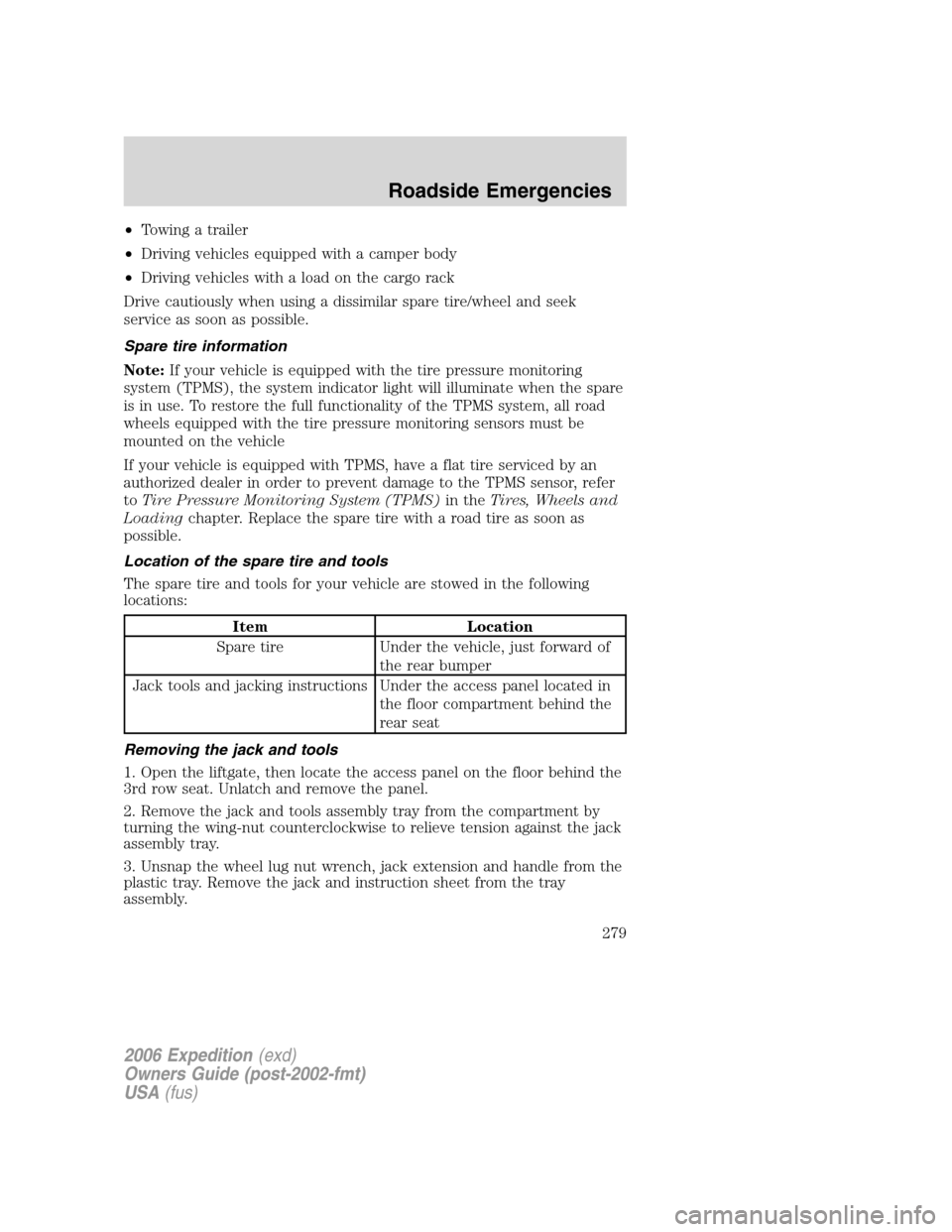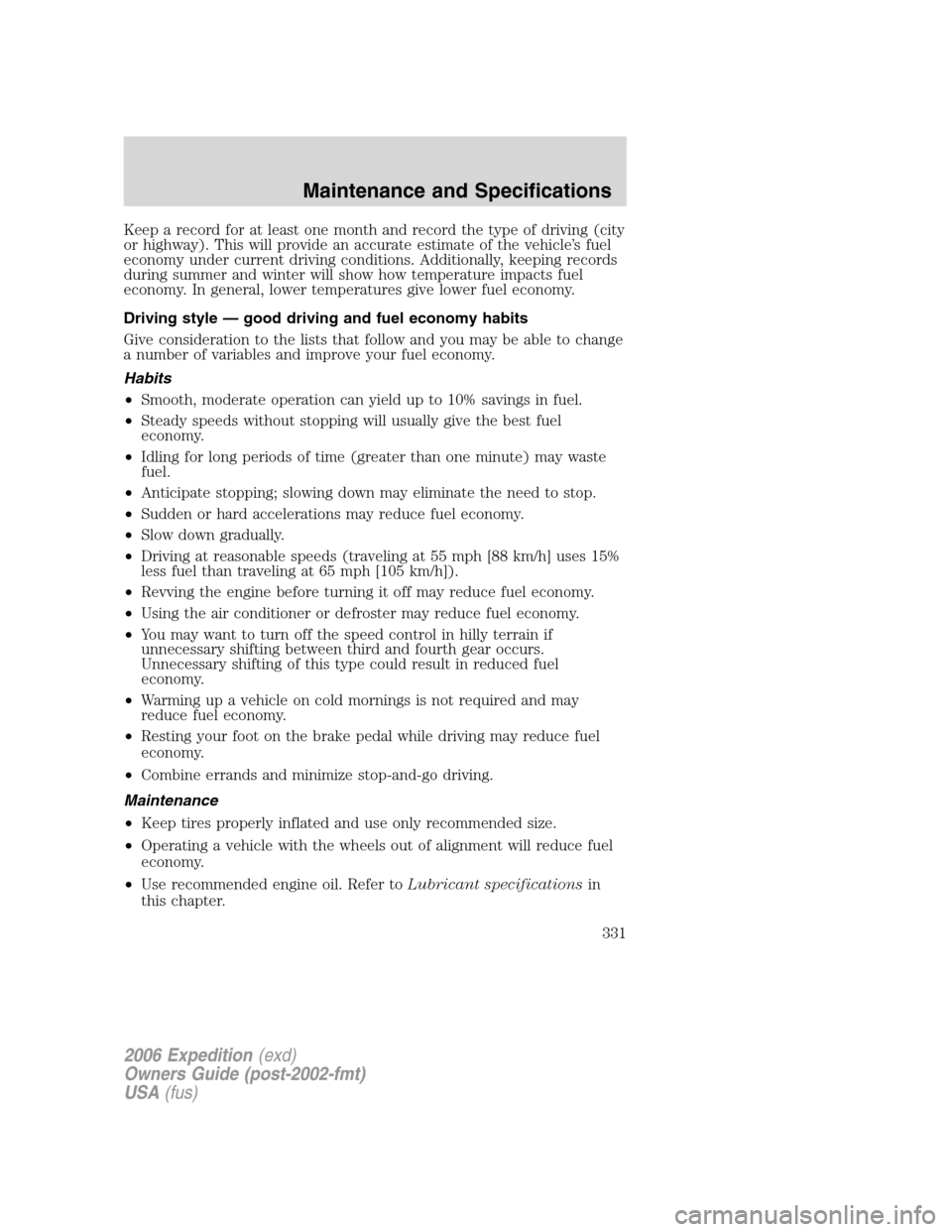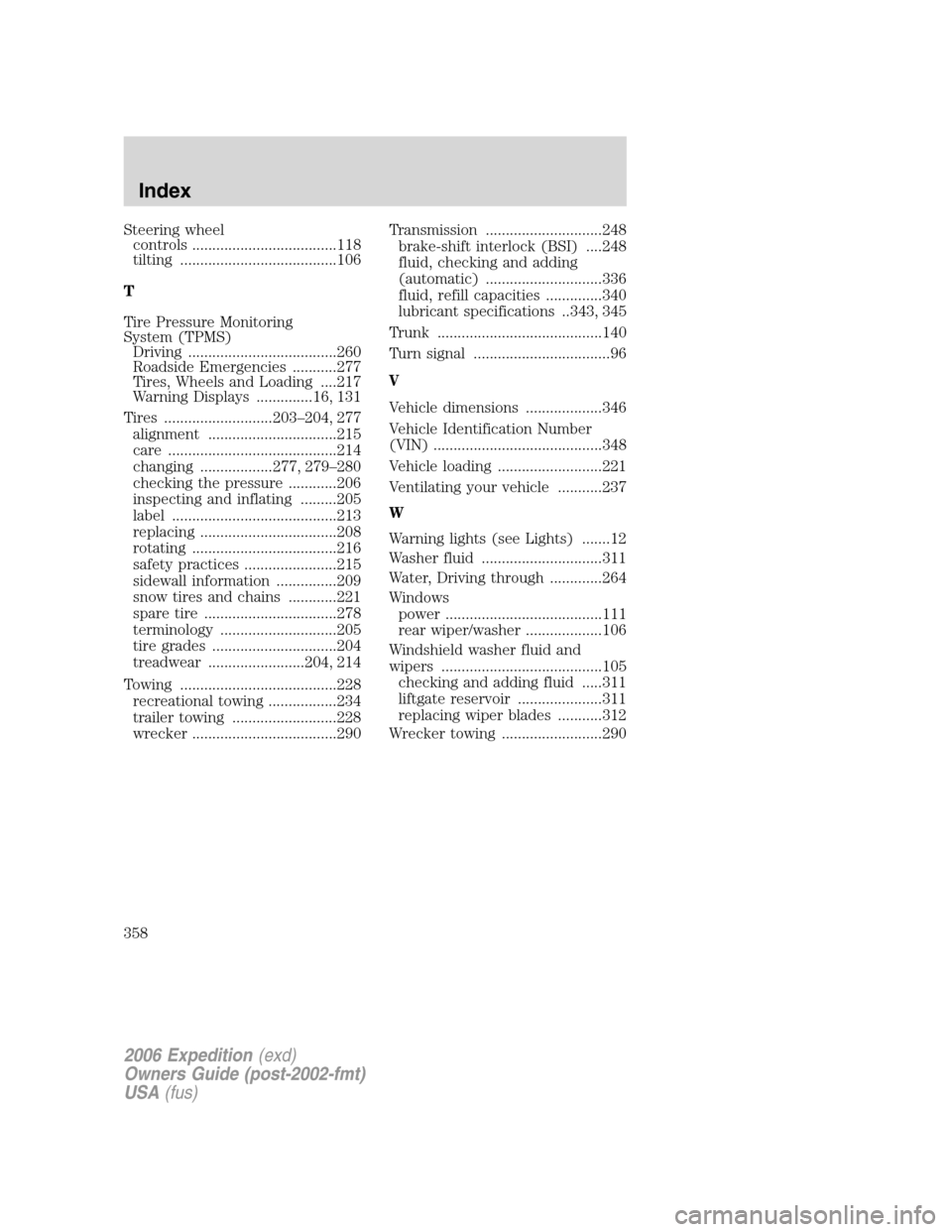Page 279 of 360

•Towing a trailer
•Driving vehicles equipped with a camper body
•Driving vehicles with a load on the cargo rack
Drive cautiously when using a dissimilar spare tire/wheel and seek
service as soon as possible.
Spare tire information
Note:If your vehicle is equipped with the tire pressure monitoring
system (TPMS), the system indicator light will illuminate when the spare
is in use. To restore the full functionality of the TPMS system, all road
wheels equipped with the tire pressure monitoring sensors must be
mounted on the vehicle
If your vehicle is equipped with TPMS, have a flat tire serviced by an
authorized dealer in order to prevent damage to the TPMS sensor, refer
toTire Pressure Monitoring System (TPMS)in theTires, Wheels and
Loadingchapter. Replace the spare tire with a road tire as soon as
possible.
Location of the spare tire and tools
The spare tire and tools for your vehicle are stowed in the following
locations:
Item Location
Spare tire Under the vehicle, just forward of
the rear bumper
Jack tools and jacking instructions Under the access panel located in
the floor compartment behind the
rear seat
Removing the jack and tools
1. Open the liftgate, then locate the access panel on the floor behind the
3rd row seat. Unlatch and remove the panel.
2. Remove the jack and tools assembly tray from the compartment by
turning the wing-nut counterclockwise to relieve tension against the jack
assembly tray.
3. Unsnap the wheel lug nut wrench, jack extension and handle from the
plastic tray. Remove the jack and instruction sheet from the tray
assembly.
2006 Expedition(exd)
Owners Guide (post-2002-fmt)
USA(fus)
Roadside Emergencies
279
Page 331 of 360

Keep a record for at least one month and record the type of driving (city
or highway). This will provide an accurate estimate of the vehicle’s fuel
economy under current driving conditions. Additionally, keeping records
during summer and winter will show how temperature impacts fuel
economy. In general, lower temperatures give lower fuel economy.
Driving style — good driving and fuel economy habits
Give consideration to the lists that follow and you may be able to change
a number of variables and improve your fuel economy.
Habits
•Smooth, moderate operation can yield up to 10% savings in fuel.
•Steady speeds without stopping will usually give the best fuel
economy.
•Idling for long periods of time (greater than one minute) may waste
fuel.
•Anticipate stopping; slowing down may eliminate the need to stop.
•Sudden or hard accelerations may reduce fuel economy.
•Slow down gradually.
•Driving at reasonable speeds (traveling at 55 mph [88 km/h] uses 15%
less fuel than traveling at 65 mph [105 km/h]).
•Revving the engine before turning it off may reduce fuel economy.
•Using the air conditioner or defroster may reduce fuel economy.
•You may want to turn off the speed control in hilly terrain if
unnecessary shifting between third and fourth gear occurs.
Unnecessary shifting of this type could result in reduced fuel
economy.
•Warming up a vehicle on cold mornings is not required and may
reduce fuel economy.
•Resting your foot on the brake pedal while driving may reduce fuel
economy.
•Combine errands and minimize stop-and-go driving.
Maintenance
•Keep tires properly inflated and use only recommended size.
•Operating a vehicle with the wheels out of alignment will reduce fuel
economy.
•Use recommended engine oil. Refer toLubricant specificationsin
this chapter.
2006 Expedition(exd)
Owners Guide (post-2002-fmt)
USA(fus)
Maintenance and Specifications
331
Page 358 of 360

Steering wheel
controls ....................................118
tilting .......................................106
T
Tire Pressure Monitoring
System (TPMS)
Driving .....................................260
Roadside Emergencies ...........277
Tires, Wheels and Loading ....217
Warning Displays ..............16, 131
Tires ...........................203–204, 277
alignment ................................215
care ..........................................214
changing ..................277, 279–280
checking the pressure ............206
inspecting and inflating .........205
label .........................................213
replacing ..................................208
rotating ....................................216
safety practices .......................215
sidewall information ...............209
snow tires and chains ............221
spare tire .................................278
terminology .............................205
tire grades ...............................204
treadwear ........................204, 214
Towing .......................................228
recreational towing .................234
trailer towing ..........................228
wrecker ....................................290Transmission .............................248
brake-shift interlock (BSI) ....248
fluid, checking and adding
(automatic) .............................336
fluid, refill capacities ..............340
lubricant specifications ..343, 345
Trunk .........................................140
Turn signal ..................................96
V
Vehicle dimensions ...................346
Vehicle Identification Number
(VIN) ..........................................348
Vehicle loading ..........................221
Ventilating your vehicle ...........237
W
Warning lights (see Lights) .......12
Washer fluid ..............................311
Water, Driving through .............264
Windows
power .......................................111
rear wiper/washer ...................106
Windshield washer fluid and
wipers ........................................105
checking and adding fluid .....311
liftgate reservoir .....................311
replacing wiper blades ...........312
Wrecker towing .........................290
2006 Expedition(exd)
Owners Guide (post-2002-fmt)
USA(fus)
Index
358